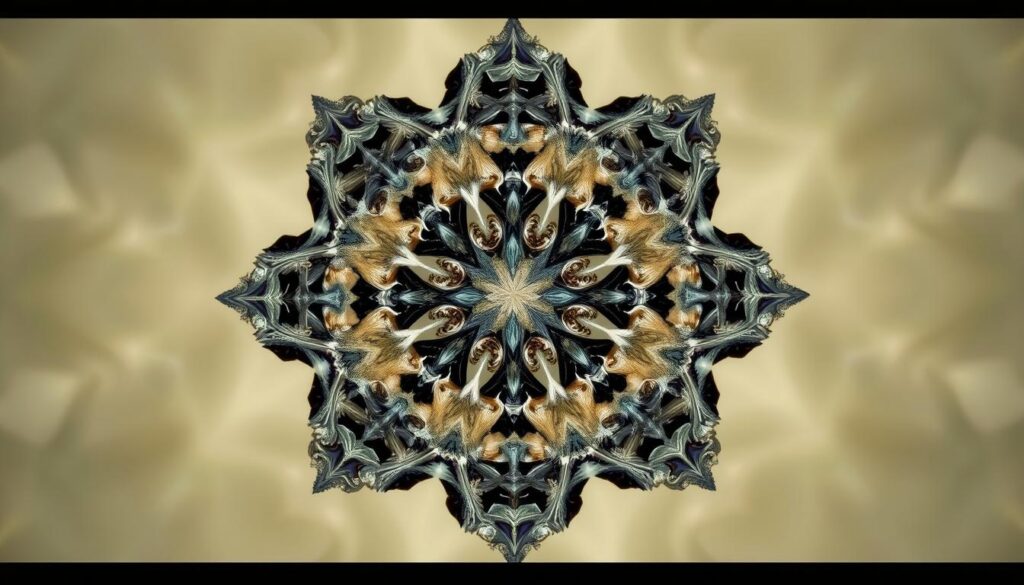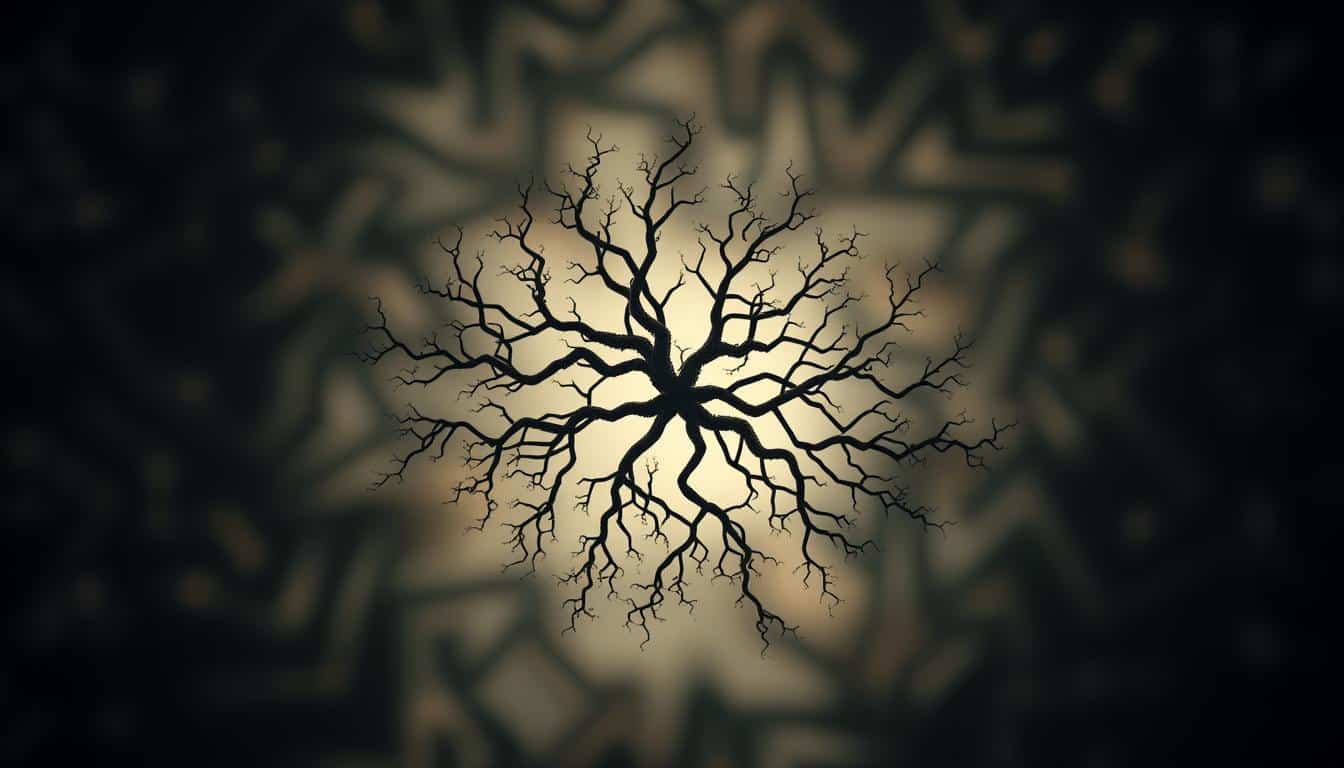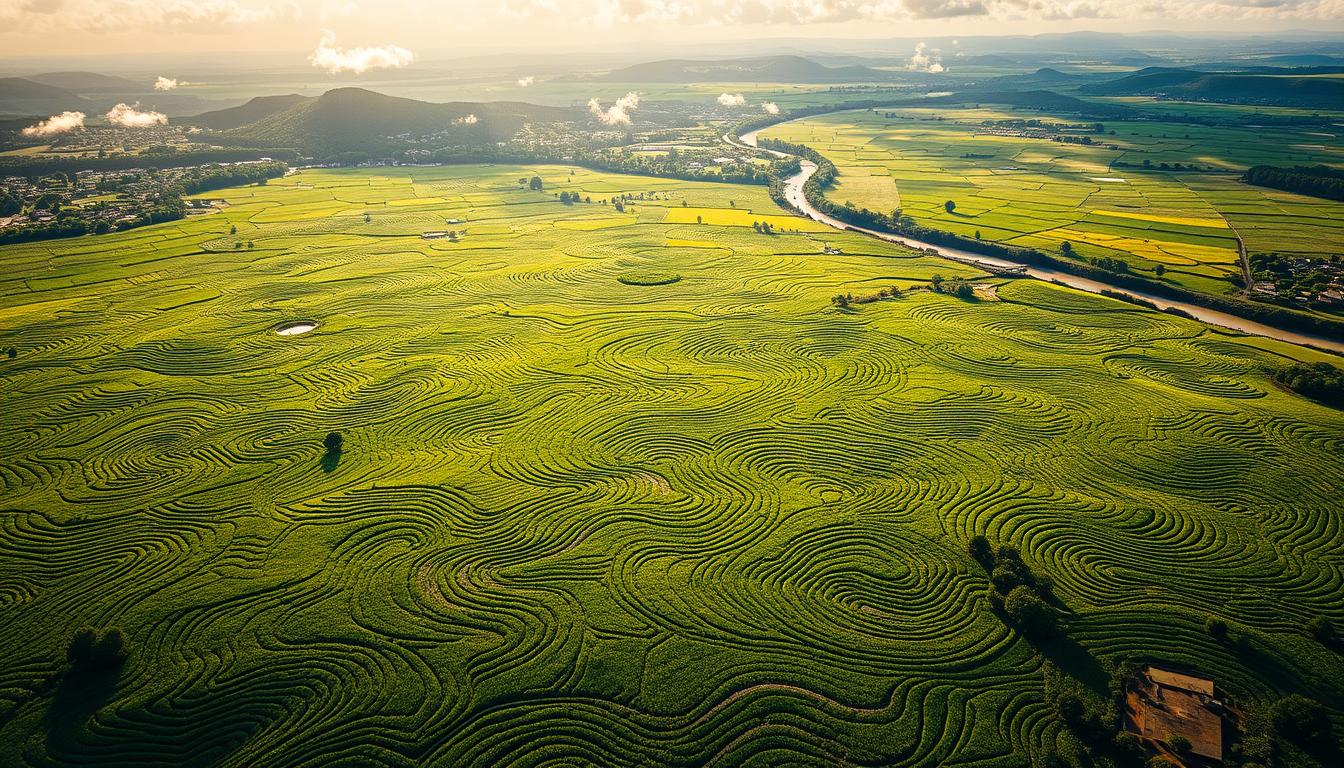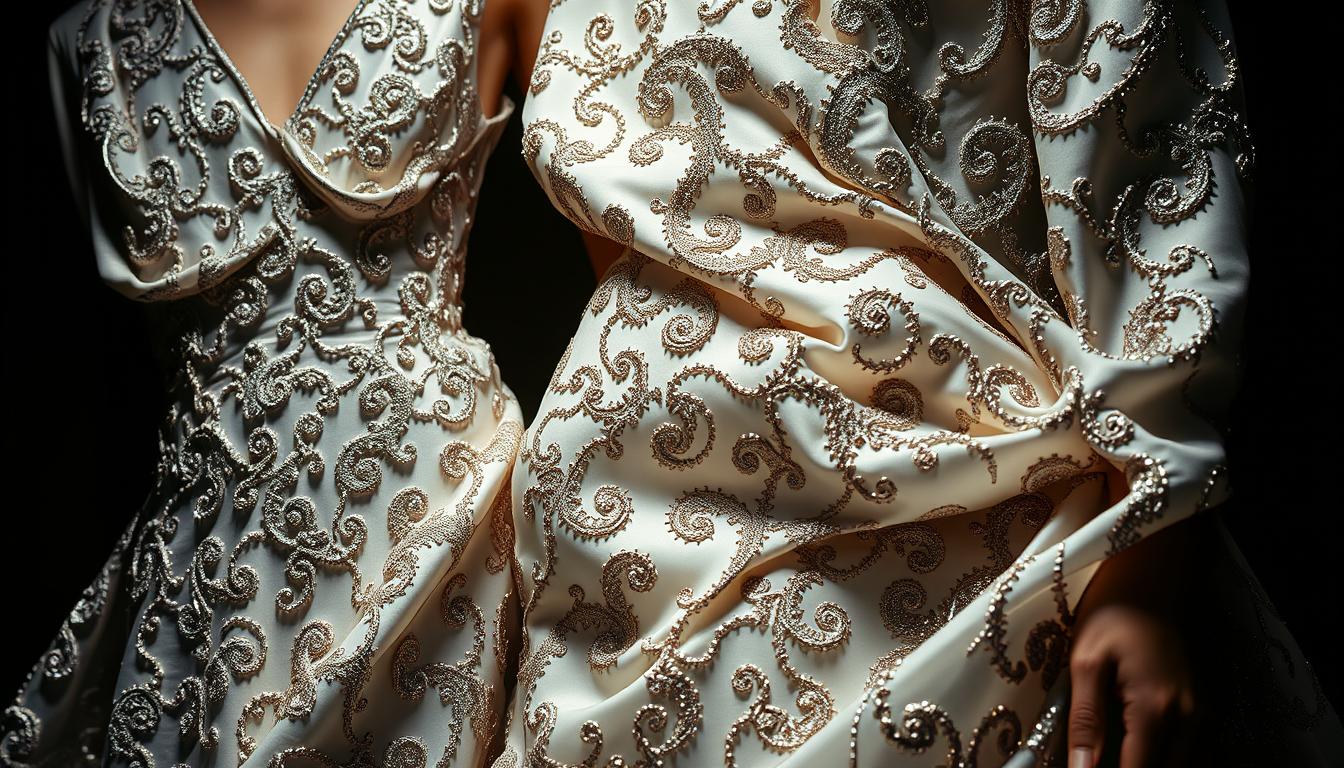Fractal art bridges the gap between art and math, creating a special space for artists. By using fractal methods, artists can dive into patterns and designs that repeat themselves. These come from complex math formulas, leading to breathtaking artworks. The rise of advanced digital tools has transformed this field. Now, artists can explore fractal design in ways never possible before. In this article, we’ll look into various techniques and uses of fractal art. Art lovers and creators will find new ways to express themselves.
Understanding Fractals and Their Significance
Learning about fractals means noticing how they show the same patterns at different sizes. They are intricate shapes found in art, science, and tech. Their importance goes far, showing how order and chaos can blend.
Fractals can be seen in many parts of nature, making us wonder and admire. They mix harmony with chaos in a way that draws our eyes. Looking at fractals, we dive into big questions about beauty and the world.

What is Fractal Art?
Fractal art is a creative form based on math. The definition of fractal art is about using algorithms for making complex, captivating designs. These designs show amazing detail and look similar up close or from far away.
Characteristics of fractal art set it apart from other art forms. It’s a mix of math and creativity. Artists use software to explore endless shapes and colors, going beyond traditional art.
Fractal artistic expression has become key in modern art. It gets both creators and viewers to think differently about beauty and how things are made. This dive into fractals has changed art practices and how we see art in the digital era.
Fractal Art Techniques & Tools for Modern Artists
Today’s art scene has been revolutionized by tech. Artists now use digital tools to make amazing fractal art. This part talks about the top fractal software that helps artists make detailed designs easily.
Digital Tools for Creating Fractal Art
Tools like Apophysis, Mandelbulb 3D, and Fractal Explorer are artist favorites. They are easy to use but have advanced features. With these tools, artists can create stunning fractal art, showing off their creativity.
Exploring Algorithms in Fractal Generation
Learning about fractal generation algorithms is fascinating. It shows the math behind beautiful fractals. Concepts like recursion and iteration are key. They help artists understand the patterns they can make, blending art and math beautifully.
Types of Fractals and Their Visual Appeal
Fractals blend math and art, drawing us in with their complexity and beauty. We see the distinct Mandelbrot set and Julia set, along with other geometric fractals. We’ll dive into these amazing types, highlighting their beauty and mathematical importance.
Mandelbrot and Julia Sets
The Mandelbrot set fascinates with its endless detailed patterns from simple equations. Zoom in, and you’ll find new, stunning designs showing self-similarity. The Julia set, on the other hand, shows unique shapes based on its creation settings. These fractals show the beauty of complex visuals from basic math.
Geometric Fractals: Koch Snowflake and Sierpinski Triangle
Geometric fractals mix simple and complex beautifully. The Koch Snowflake begins as a triangle and becomes more detailed with each step. The Sierpinski triangle also becomes more complex by subtracting triangles, creating a visually striking pattern. These shapes show how repetition turns simple forms into mesmerizing visuals.
The Intersection of Fractals and Nature
Nature’s fractals give us a peek into the math that shapes our world. Look at coastlines or tree branches, and you’ll see patterns. These patterns show how nature is complex yet beautiful.
Fractals appear in many natural forms, like snowflakes and clouds. They’re not just pretty to look at; they support life. The way blood vessels and neurons are arranged helps them work better.
Digging into how fractals and nature are connected makes us value our world more. By studying natural fractals, we can unlock the secrets of life’s patterns.
Fractals in Science and Technology
Fractals in science are hugely important for practical uses, touching many areas. They help us get better at medicine, communications, and studying the environment. This concept of geometry makes it easier to understand and improve those fields.
Applications in Medicine and Telecommunications
Fractals are key in the medical world for looking at complex patterns in biology. They help us understand how our bodies work better. This understanding leads to better ways to diagnose and treat diseases. For example, we can study tissues more closely to spot issues in blood vessels and tumors.
In the world of communications, fractals help make better antennas. These antennas do a great job sending signals and don’t need much space. This makes wireless tech work better and take up less room.
Fractal Geometry in Environmental Modeling
When it comes to studying the environment, fractals are very useful. They help scientists predict weather and other natural events better. This method takes into account the unpredictable nature of weather patterns. Using fractals, experts can make simulations that closely mirror the real world. This makes monitoring and managing the environment more effective.
Beauty in Fractals: Aesthetic and Well-Being
Fractal beauty has a unique way of pulling us in. Its patterns are detailed and connect us to nature deeply. This beauty makes us value the harmony in art and our surroundings more. Seeing these captivating patterns can make us feel less stressed and more at peace.
Research tells us that our brains naturally like the repeating patterns of fractals. They’re similar to patterns we see in nature. This link makes us feel good, both emotionally and mentally. We enjoy a peaceful feeling looking at fractal art. It mixes complexity with simplicity in a way that’s pleasing to us.
More and more, both artists and those who enjoy art are attracted to fractal art’s soothing nature. Making or looking at fractal art is a way to express ourselves. It also improves our mental focus and emotional balance. This strengthens the deep tie between art and feeling good.
Art and Design: The Differentiation in Fractal Works
Art and design view fractal creations differently. Art is about expressing feelings. Design is about being practical and functional. It’s important to know this when looking at fractal art. It focuses on looks and what it means to each person.
Fractal art is more than just pretty designs. It connects deeply with those who see it. Artists use fractals to share feelings and ideas. They do this with complex patterns and bold colors. On the other hand, designers use fractals to make things that are easy to use. They focus on visuals that solve problems.
Understanding art and design helps artists in their work with fractals. They can reach out better to their audience. This shows that fractals can touch hearts and also work well in practical ways.
Notable Artists in the Fractal Art Movement
Fractal art has grown popular thanks to some key artists. Each one brings their own unique vision and skills. This has helped this exciting type of art really shine.
Scott Draves and Electric Sheep
Scott Draves is a standout in fractal art with his Electric Sheep project. It’s a collaborative screensaver that shows amazing fractal animations. These animations keep changing and are made by people all over the world.
Draves’s work melds art with technology in a new way. It allows people everywhere to add to and enjoy beautiful digital imagery.
Janet Parke’s Contributions to Fractal Art
Since the 1980s, Janet Parke has been a key player in fractal art. Her work is known for its bright colors and detailed designs. It has helped make fractals known as a true art form.
Her creations have inspired many other artists. They show the beauty and complexity that comes from mixing art with math.
Photography and Fractal Subjects in Nature
Fractal photography shows us the beauty of nature in a special way. It lets photographers capture complex patterns and structures in the world around us. We see the detail in tree branches and the twists in coastlines, showing nature’s complex beauty.
Photographers like Ansel Adams and Sebastião Salgado have mastered this art. Their photos show the stunning patterns in landscapes. They turn regular scenes into amazing visual stories. Their careful work uncovers the fractal beauty in nature for all to see.
By using fractal photography, artists share the deep beauty of the natural world with us. Each photo honors the complexity and balance in nature. It encourages us to look closer at the patterns that shape our world.
Showcasing Fractal Art: Exhibitions and Media
Fractal art exhibitions are key for promoting this art’s beauty. Artists get to display their work in many forms, like digital or big installations. With more people loving fractals, these events are crucial for drawing attention.
The way fractals are shown in the media has changed a lot. Now, online sites, social media, and digital galleries help spread the word. Artists can reach folks all over the world, and more people get to enjoy and talk about their art.
Having a community is important for these exhibitions’ success. Artists, mathematicians, and fans all share their thoughts and learn from each other. This mix of people can lead to new ideas and make fractal art even more creative.
By showcasing fractal art, these events add to the story of art and math together. They encourage people to see how art and math are connected. Mixing art with math helps everyone understand both better. This makes fractal art more interesting to everyone, not just art fans or mathematicians.
Conclusion
Fractals are important in many fields like art, science, and health. Artists use fractal art to create visuals that touch people deeply. These techniques help artists connect with nature’s mathematical patterns.
The future of fractal art looks very bright. New technologies are making it easier to create fractal art. This lets artists find new ways to amaze us with fractals.
Fractals remind us how math and art are closely linked. They help artists make work that not only looks stunning but also makes us see the beauty in complex patterns.



